
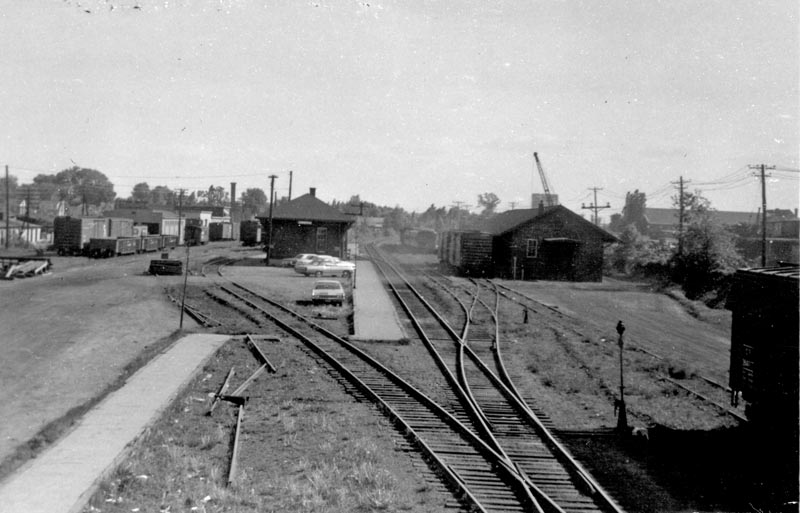 Bruce Chapman took this historic photograph on May 29, 1968. When I hired on as a Canadian Pacific Operator in 1965, the most amusing times at Ottawa West seemed to be when the eastbound transcons1 were late and they had to meet westbound passenger trains at Hull West. If No. 2 or No. 8 were late and they had to meet either a Chalk River or Brockville Passenger train which always stopped at Ottawa West for passengers, you always had an audience while trying to hoop the head end, usually a 1400 series FP7 or FP9. If he was at speed, you'd walk halfway to the Prince of Wales Bridge to pick up the hoop; the tail end, you didn 't have to give him a hoop, you gave him a staff with his orders tucked inside the staff-holder, a long leather pouch with an 18-inch leather strap holder which you held as wide as possible to let the head-end brakeman snag back and hit the passenger car with great force. After the train passed without stopping, the worried passengers would besiege you wondering why it didn't stop and when was their next train. The meets at Hull West sometimes too created a little confusion. That was where the two staff systems met. One staff had Ottawa West, Wamo and Hull West (engraved "D"). The other had Ottawa Union, Hull, and Hull West, engraved "A". Wamo got its name from being the junction of the Waltham and the M.&O. Sub., the first two letters of each. Laman was the junction of the Lachute and Maniwaki Subs. Anyway, No. 8 would have to give his staff to the operator at Hull West who would give it to No. 261, the morning Brockville pool train that year, (usually an RDC or two). Then the operator would get the staff from No. 261 and give it to No. 8. 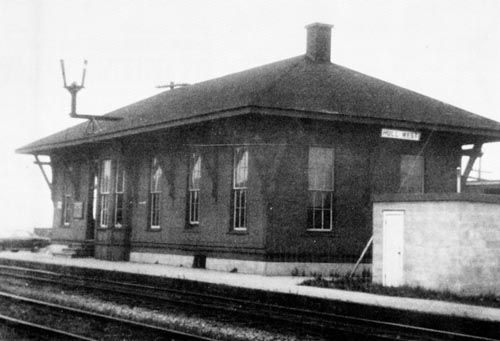 This is what Hull West Station looked like on July 25, 1966 not too many years before it was closed and replaced by the new Hull station which still stands just north of this spot. Bruce Chapman photo.  A view of Montcalm crossing at Hull West shows the tower from which our cover photo was taken. Note the bell hanging from the tower. This bell is now in the possession of the Society. Note also the old Connors factory in the background which is being proposed as the site for the railway portion of the Museum of Science & Technology. The photo was taken by John Frayne in 1966. One of our other BRS members, who used to be a swing operator at Hull West, working days Saturday and Sunday, was not a fan of having two trains at Hull West at once. Heard on the Smiths Falls dispatcher's phone one Saturday morning about 7:50. "Hey Larry, I see the day man getting off the bus.... I just dropped both order boards to red.... I see him taking off his hat....I see him jumping on his hat...." The reason both boards (train order signals) were red was because if there was an operator working when two trains were to meet, and it was not an originating station for either train, the operator had to be made a party to the meet in the train order. For example, "No 8 eng 1400 meet No 261 eng 9106 at Hull West." No. 8 would get the order usually at either Carleton Place or Ottawa West, and No. 261 would get the order at Ottawa Union. No 261 being westward or inferior, he would take the siding behind the station at Hull West. 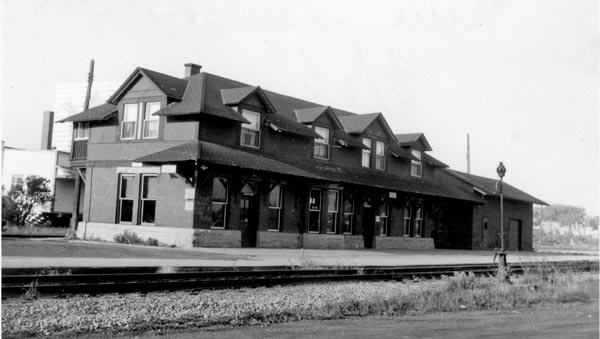 Hull Station was also known as
Beemer station for a local railway builder who was involved in the
building of the Maniwaki and Waltham Branches during the 1890's.
I was posted here as agent three weeks before it closed. This photo was
taken by Bruce
Chapman on May 29, 1968.
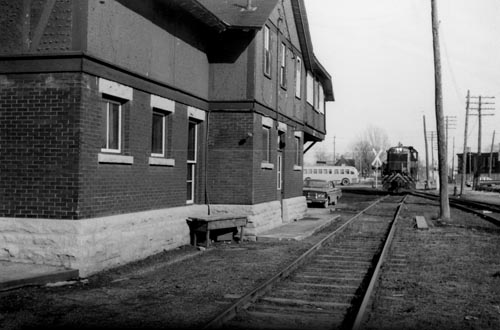 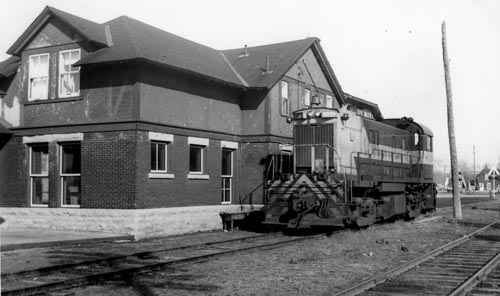 Two views of the back side of Hull Beemer station showing the back track which gave access to the O'Keefe brewery. RS-23 8039 is doing the work this day. Empty insulated boxcars were brought in and loads of beer brought out. Both photographs taken by Bruce Chapman on 3 December 1966. 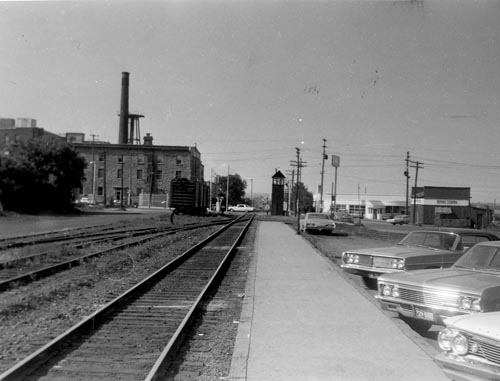 Hull West looking north towards Montcalm
Street and the crossing tower. Canada packers is on the left
(west). The platform was a long one - good for six or seven
passenger cars. There were two passing tracks at Hull West, one
on the west side (seen here) and one on the east side. Picture taken by
Bruce Chapman on 21 May 1968.
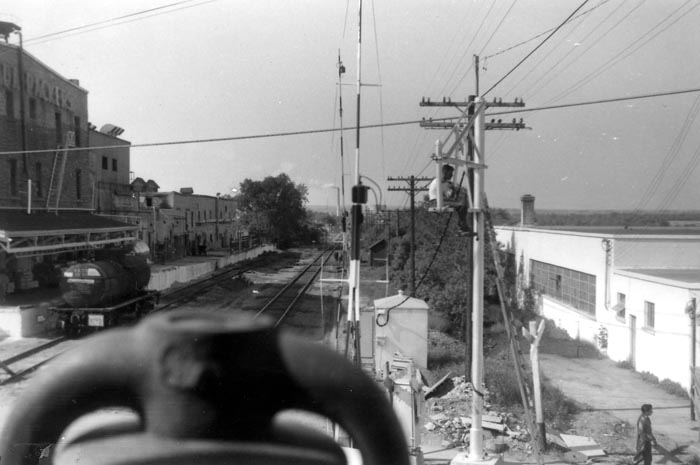 The view north from the Montcalm Street crossing tower. Canada Packers is to the left. The top of the crossing bell can ne seen bottom left. It came from a steam locomotive. Photograph by Bruce Chapman on 29 May 1968. from and to the Lachute Sub. When the Hull operator knew No. 80 (the Maniwaki wayfreight) or a Lachute passenger train was getting close, he'd first get an "OK" to a clearance from the Smiths Falls dispatcher for the train to enter the M.&O. Sub. Then he'd call the operator at Hull West for the staff to also enter the M.&O. Sub. The operator at Hull West would just push a button, and "juice" would be generated by the generator until the operator at Hull Beemer removed his staff from the machine. The third machine on the counter for Wamo was the same, but there was no operator at Wamo, and trains did not have to get a clearance to enter the M.&O. Sub, just get a staff out of the machine. For train crews who had never done it before, we had some awful train delays there from it. The second machine for the operator was the Ottawa Union machine, and the fourth machine was the Ottawa West machine. All four machines had the staff (machine) holder, a separate generator, and a separate bell. Also, on the staff holder was a phone. The bells on each machine had their own tone, so you usually had a general idea who was calling. Two rings on the bell meant that the operator (or crewman at Wamo) wanted to talk to you. 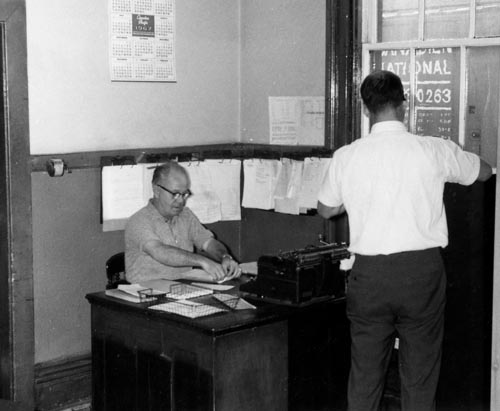 George Wallace (R) and Phil Gagne (L) were responsible for preparing the E.B. Eddy waybills in Hull West Now, Hull West also had two clerks working the day shift. They billed cars from all the industries in Hull West's area - Molson's, Eddy's, Canada Packers, an axe company and a big manufacturing company. It was very busy. There was an agent at the far south of the building, and in a small part of the east side of the building was a CP Telecommunications office for sending and receiving telegrams. The agent was French-speaking, as were his two delivery boys. They picked up and delivered telegrams. The clerks, agent, and operators were mostly English-speaking, but could stumble along in French if they had to. Anyway, these two boys, when they saw the swing man enter (he worked 4-12 Thursday and Friday also), they seemed to take great pride and joy in seeing this man's temper rise. They would tie a string to the bell-ringer on the Ottawa West staff machine, then go into the telecommunications office. Several seconds later, ... "ding ding" ... a scrape of the operator's old chair, a rustle of feet over to the staff phone. "Hello?" "Hello?" . . . The rustling of feet back to the desk in the bay window. Two minutes later . . . "ding ding". Another scrape of the operator's chair, movement to the phone. "Hello?" "HELLO???" Hanging up the phone. "Who the Sam Hill's working at Ottawa West today?" Only, the words weren't "Sam Hill".... Bytown Railway Society, Branchline, November 1986, page 4. |
![]()